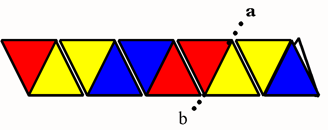
| FOOTNOTES TO FANDOM #15a | FOOTNOTES Page | Obituary Page | |
| ||||
Lisa is saying her farewells to the Man from Gestetner and promising to think over his proposition. The exact details elude me, but I gather that in return for a few thousand quid Lisa could become the owner of a computer-controlled IBM typesetter, a combined offset printing and collating machine, and paper and ink for a year's Zimri's. (Buy now, before VAT !) I retire to raid the wine cellar. By the time I return, dusting a bottle of Conesa Special Reserve Port, the MfG has gone. Lisa is tuning up her typewriter to the lively strains of flamenco belting out of the twin-track tape-recorder. A pile of Loc's wait to be comented on, beside a pile of paper on which we are to jot down all the witty comments that occur to us (d.v.). Lighting adjusted, chairs drawn up to the table, I uncork the bottle, pour out, and we're ready. Almost. - Just a minute, says Lisa firmly, when are you going to explain what a hexahexathingummie is? - A hexahexaflexagon, you mean? - Yeah, that, she confirmed. - Well, back in 1939 Arthur H. Stone, an English graduate student, went to Princeton University on a maths fellowship. He had to trim some American notebook sheets to fit a quarto English binder, and started folding the strips of paper he had left over. Playing about this way he made a paper polygon which had the property of changing its faces whenever it was flexed. And that's how he accidentally discovered the flexagon. - Show me, she demands, promptly tearing strips off our valuable notepaper. There's no way out, so I proceed to demonstrate. - Ideally you start off with strips about 1½ inches wide... that's about 4cms, I add since she always works things out metrically, and, er, a bit over 40cms long. Then you mark it off in 19 equilateral triangles, thus:
Colour the first three triangles red, yellow, and blue, and continue in the same sequence on one side of the strip, leaving the last triangle blank. You don't have to colour 'em but it makes the finished thing more decorative - you can number the triangles 1,2,3, and so on if you wish. On the other side of the strip, leave the first triangle blank and colour the rest in, say, black, green and purple in the sequence shown.
- That's a terrible colour scheme,, she interrupts. - The choice of colours is a personal one, and not relevant to the demonstration. Right, now you fold the strip on itself so that the same colour triangles face each other inside - black on black, green on green, purple on purple.
Then you fold it this way (ab). And finally this way (cd) to form a hexagon.
Then you turn the blank triangle under and stick it over the blank triangle on the other side, so that all the triangles showing on the outside are either red or yellow. - Ghod, that sounds dead conplicated, she complains. - It's easier to do than describe in words, as a Certain Artist would assert, I counter, and she blushes gracefully. - Now your hexahexaflexagon is ready to flex. Pinched together two adjacent triangles, bend the paper along the line between them and push to the opposite corner. With luck, the flexagon opens up to show another colour face. By random flexing you should be able to uncover the other colour faces, but it's not always as easy as you'd expect.... Lisa's flexing the damned thing when I leave some hours later. If we get out it will be a miracle. Even if she does get around to producing it, if she tells other editors about the fascination of flexigation, I can see fanzine publishing going into decline. I wonder if I ought to warn them of the sad tale told in Martin Gardner book Mathematical Puzzle & Diversions (Penguin) about the poor sod who caught his tie in the folds of a hexahexaflexagon he was flexing. With each successive flex more of his tie disappeared; at the sixth flex he was swallowed up bodily. I must remember to scan the fan press for reports and rumour of disappearing fan editors... ■ FOOTNOTES TO FANDOM #15a... |
 |




